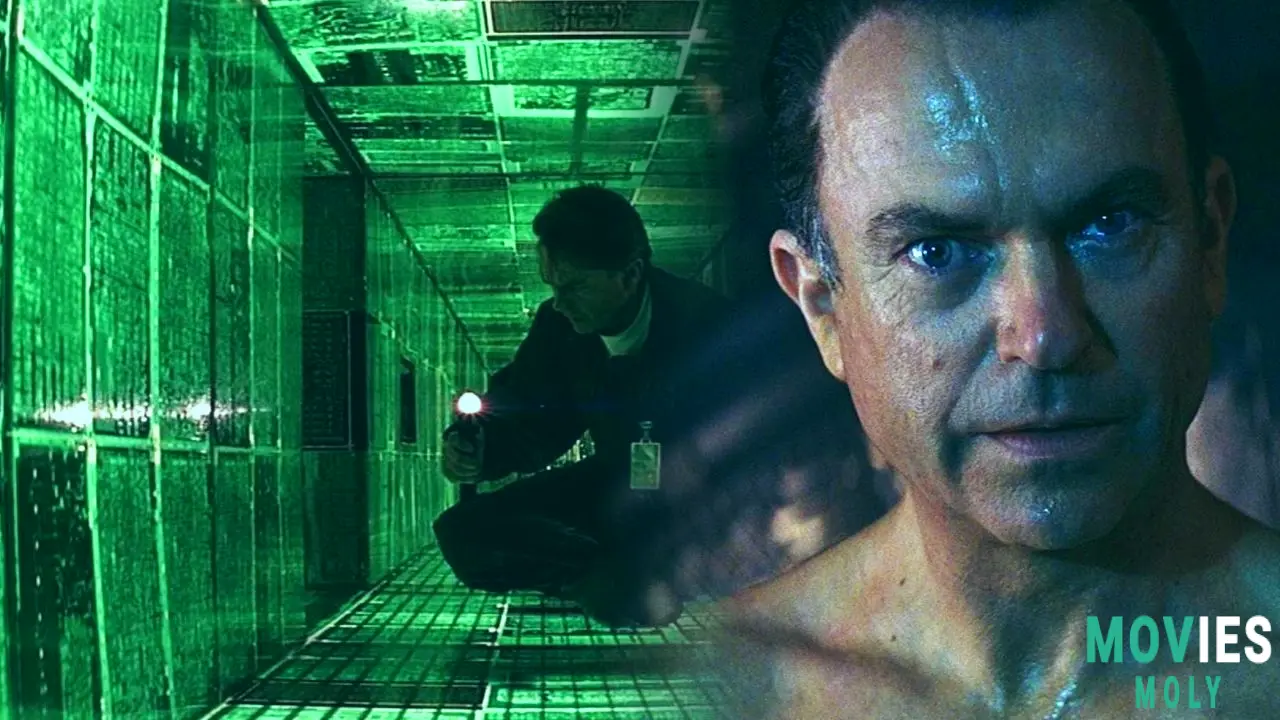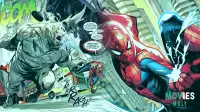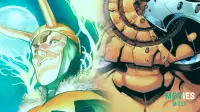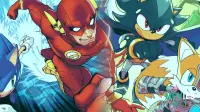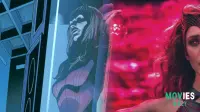For decades, Paul W.S. Anderson's 1997 film, Event Horizon, has haunted the thoughts of horror and science fiction fans alike. While it didn't find huge success right away, this wild space horror movie, a real journey to a different dimension of evil, grew into a cult favorite. People slowly found this movie, and recognized its wild style. Now, after all this time, we finally learn what truly happened to the first crew on that ship during their doomed mission, thanks to an official and much-anticipated prequel comic series.
The Long-Awaited Return to the Event Horizon's Terrifying PastIDW Publishing recently launched Event Horizon: Dark Descent, a new miniseries from writer Christian Ward and artist Tristan Jones. This series works as an official prequel to the movie, giving us the answers many have wanted. With issue #2 now available, fans are eager for more. We know just how real this prequel is, because both Paramount and the original filmmakers were involved in its creation.
Christian Ward spoke about the project, saying, "After pitching my idea of where to go with the story—and some of the big, big swings I was going to take—to IDW and getting the thumbs up there, it was then presented not just to Paramount but also the filmmakers, in particular Phillip Eisner, the screenwriter of the original movie." Ward emphasized his respect for the original story, adding, "It was very important to me that he approved of what we were doing with his world and I'm thrilled to say he was very excited." This approval means a lot, assuring fans that the new story fits right in with the established world of the film.
Meeting Captain Kilpack and Facing the King of Hell
The comic series centers on Captain Kilpack and the very first crew of the Event Horizon. They must stand against many evil powers, including the actual King of Hell, a being they call Paimon. Without giving away too much, Ward and Jones have really committed to creating a story that feels like it came from the same source as the movie. This film was even featured in the pages of FANGORIA #164, showing its significant standing in the horror community.
"I really wanted this comic to change how fans saw the movie," Ward explained. "I didn't want to do anything with the story that would contradict the film, I only wanted to make it even richer." He added his personal influences, "I'm also a big Clive Barker fan, so there's a little of his weirdness in here and since Event Horizon is often lovingly referred to as 'Hellraiser in Space.' I wanted to give the story its Pinhead in Paimon."
Paimon: The Hellraiser-Inspired Evil Driving the Horror
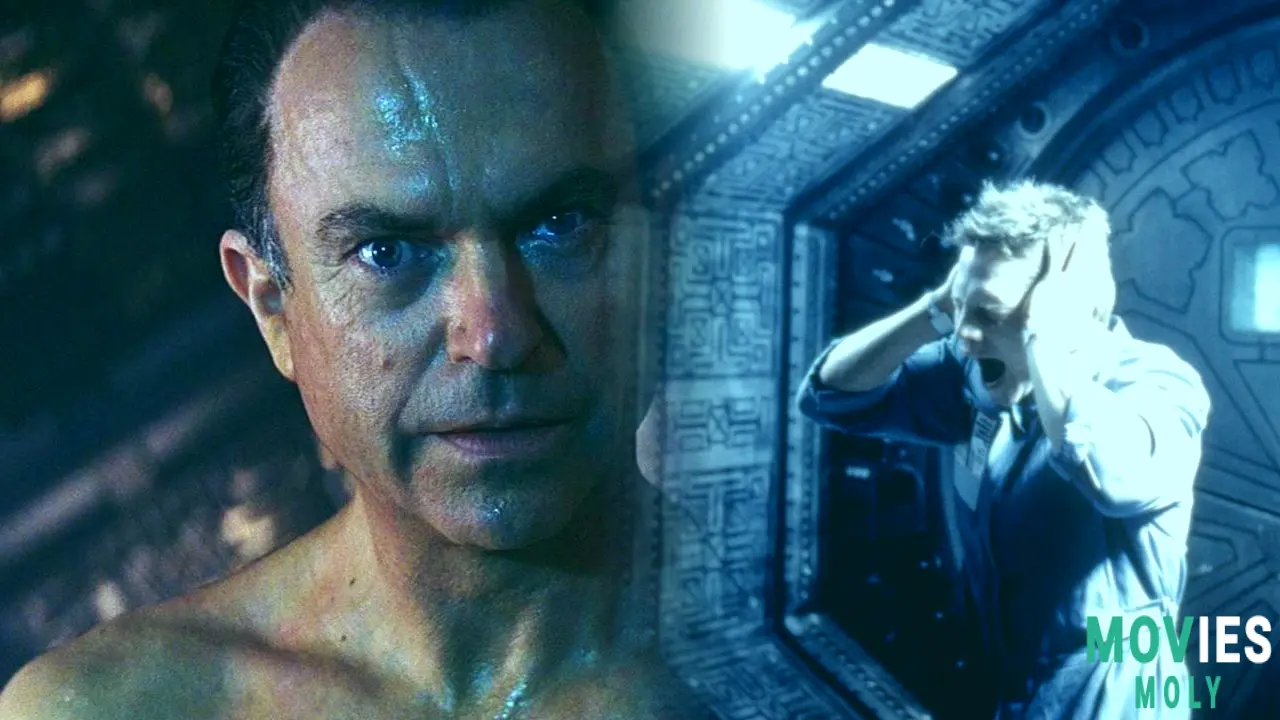
Paimon truly lives up to the comparison to Pinhead. He also suits the pages of a comic, as he is, in the best way, very much a comic book villain. He is over-the-top and absurd in a way that would cost immense sums to show on screen. Luckily, comics do not deal with visual effects budgets, allowing the creators to go all out with his design and presence.
"Despite wanting this comic to feel cinematic, hence wanting Tristan Jones as our artist, I wanted to be unashamedly a comic book and nothing screams comic book than a big bad guy," Ward said. He then shared how he came up with Paimon. "He was born from returning to the film for inspiration and I was suddenly struck by how so much of the film looked medieval, specifically the Gravity Drive chamber and the crucifix window of the cockpit and so when I began working on the book I researched medieval depictions of Hell and starting to research demonology. It wasn't long before I looked into Paimon. He was of course perfect since he's often referred to as the King of Hell and the more I read the more I realised he was perfect for our story, though to say anymore would give too much away."
Ward is careful to maintain the sense of dread and unknowing that made the film so effective. "I'm very conscious that a big part of the film's success is its mystery, so I'm keen not to over-explain too much," he added. "After all, a key component of comics horror is humans being dwarfed by that, that they cannot comprehend. All I'll say is that he makes his presence felt in many ways and is pure, pure evil." This approach allows the comic to show terrifying events while still preserving the original film's unsettling feeling of something beyond human understanding.
Unexpected Influences Shaping the Comic's Narrative
While Ward did not draw upon outside cinematic influences for his horror approach, he did find inspiration in the Star Wars series Andor. "It was far more important to me that the story felt like Event Horizon than matching up exactly perfectly with the film," Ward explained. "One thing I always loved about the movie was its international crew, so that was something really leaned into. This is almost like a cosmic horror Star Trek. Bloodierly going where no crew has gone before."
Ward later expanded on the Andor connection, telling ScreenRant, "For me, watching Andor was the final piece of the puzzle when I was putting together what this series would be. It's all about giving great context with the view of greater emotional or psychological complexity." This shows how the comic aims to deepen the understanding of the original film's events, providing a richer experience without simply retelling the existing narrative.
The Return of the Infamous "Blood Orgy" Scene
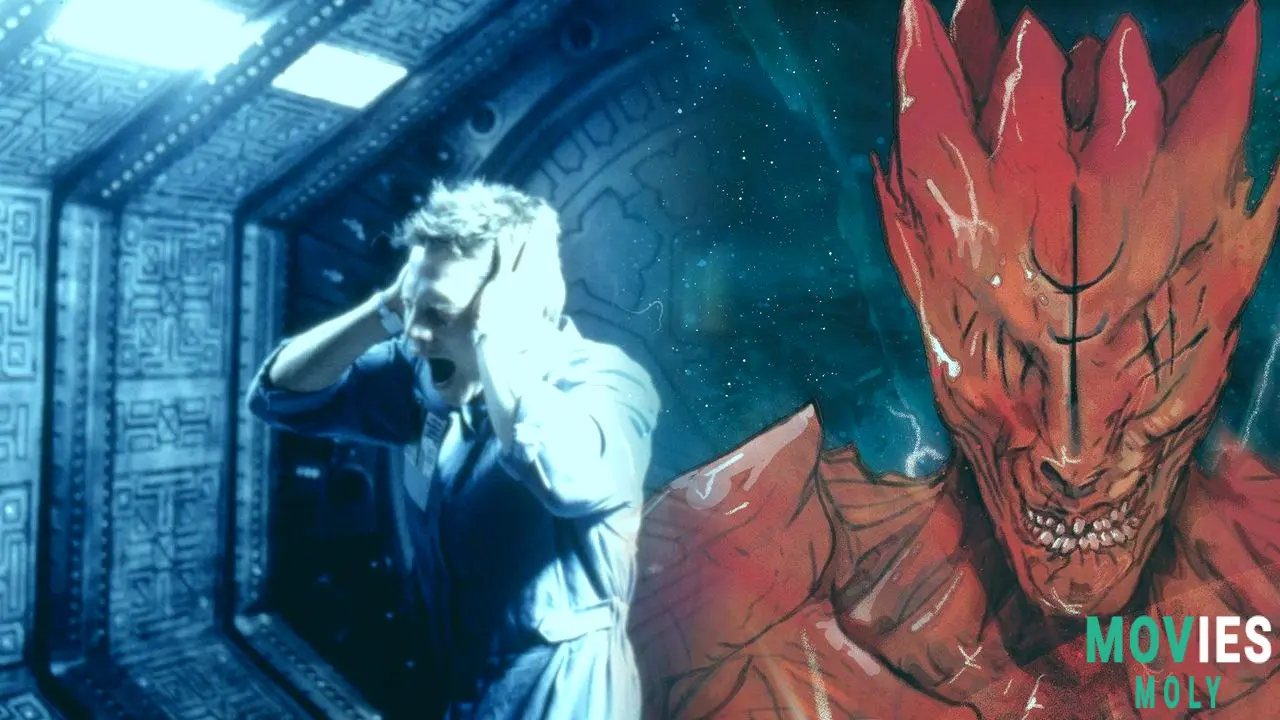
Much like the movie itself, the comic series is not afraid of brutality. Expect more of that as the series goes on. "I'll say this… we're doing the blood orgy!" Ward teased with enthusiasm. This phrase immediately captures the attention of longtime fans, as the "blood orgy" scene is a well-known part of the film's history.
In the original film, a small team is sent to investigate a distress signal from the Event Horizon, which vanished seven years earlier. The rescue team finds signs of a massacre, leading to horrifying discoveries. Audiences were given only brief glimpses of what happened to the original crew, in a sequence known as the "blood orgy." This scene was far more intense in its initial form, but studio cuts, driven by test audience reactions, removed much of the graphic content. Many of these cut scenes are now lost. This makes the comic prequel the only place where these terrifying events might finally be fully revealed to fans.
Ward confirms this, stating, "My goal was that I wanted to write a story that would change how one might view the film... That said, the one element of fan service that is in the series is the infamous 'blood orgy' sequence that was cut from the film. You'll have to pick up Issue #4 to see how we're using that, though. That issue will make you cry and recoil in equal measure."
Ward clarified his approach to gore: "Ironically, even as a horror fan I'm not a gore guy, so gore in this series is used sparingly. I'm more interested in the characters' journeys than splatter, and I didn't want there to be gore for gore's sake. Each time we have gore it'll often be used in a thematic way rather than just for its own sake. But of course I wanted it to be shocking and brutal when it happens, and we're very lucky to have Tristan who draws it all so hideously."
Artist Tristan Jones echoed this sentiment, stating, "I think it's more an emotional bludgeoning for some of these characters, particularly once we get to #4... but I'm definitely going as hard as I can without things feeling gratuitous. Each character has a bit of a crack in their exterior, and Paimon manages to get a finger in there for each of them—some just have better mental fortitudes than others, but he does what he can to make that split into as savage a rip as possible." Jones also noted the increasing intensity, "I think each issue has been like a car progressively shifting gears upwards. #2 is definitely harsher than #1 in terms of the effects of things, and #3 is certainly more grotesque than #2. But #4 is where we start to really dovetail into what was hinted at in the film, so take that as you will!"
Crafting a Deeper Understanding of Doctor G. "Billy" Weir's Journey
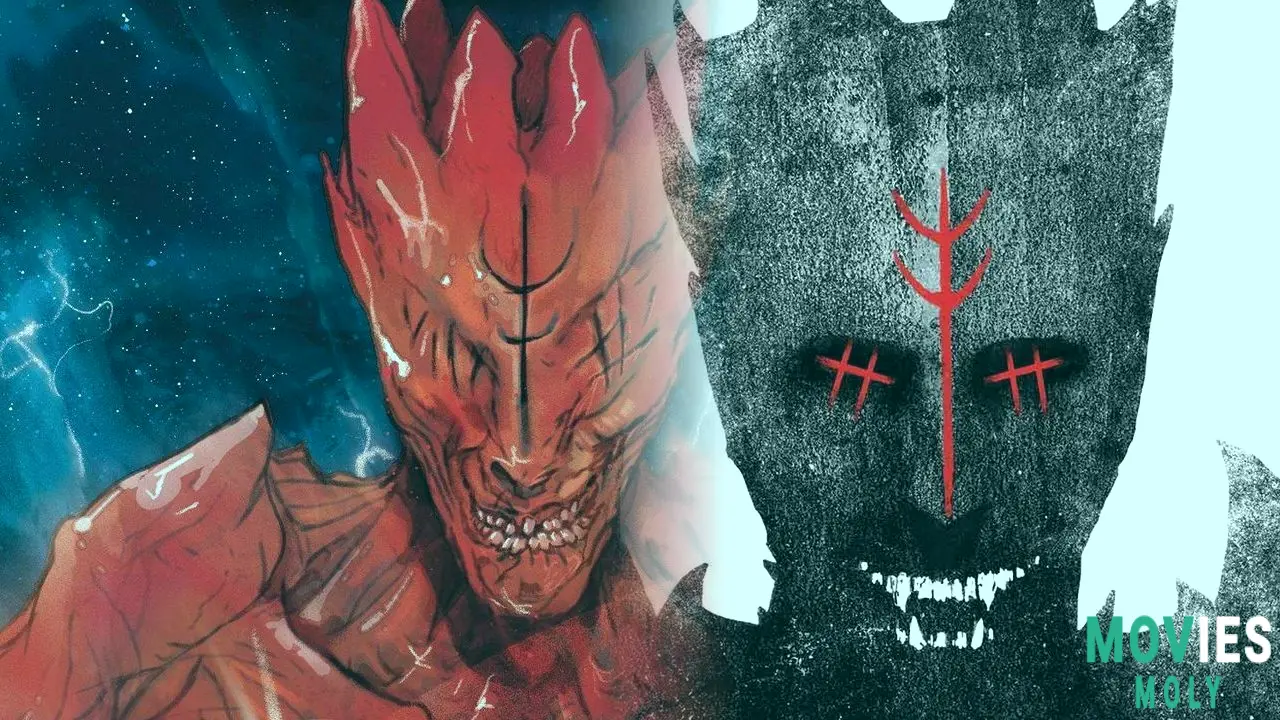
Event Horizon: Dark Descent started in August, offering readers the chance to return to the world of the ship. Set before the famous 1997 film, the comic follows Doctor G. "Billy" Weir (played by Sam Neill in the movie). It shows him during his initial journey on the ship he built to test its gravity drive. It also follows his personal struggle to come to terms with the death of his wife. More importantly, Dark Descent gives greater perspective into the evil powers working from beyond our reality. These powers turn the Event Horizon into a pathway to destructive forces no one has ever seen.
The comic's visual format offers an advantage in showing these horrors. As Ward points out, "Being a purely visual medium I knew we HAD to see Hell. We had to see the horrors that besieged the original crew in (thanks to Tristan Jones and Pip Martin) all their insane beautifully gory detail." Jones added, "I know Chris was very much like 'we're showing this!' and had a pretty clear idea of what that should look like based on the angle we've taken with the story here, and for me it was a combination of two things—giving the reader something insane to look at, but make it feel like something that could've been put to film then, if the budget was there."
Jones also spoke about keeping the vastness of cosmic horror alive. "At one point I kind of wanted to show more 'denizens' but I had one in an early version of #2 overlooking things as the ship floated through 'Hell,' and we quickly realized it detracted from the cosmic horror element and the sheer scope of what we were putting down for readers to take in. But that right there was another one when it came to the visuals—scope. Cosmic horror is about scope to my eyes." This careful approach ensures the comic can display frightful visuals without losing the core feeling of the unknown.
Hopes for the Comic's Lasting Impact on Event Horizon Fans
Ward has a grander story in mind, hinting at potential future plans. As for any future plans beyond the prequel, the writer stayed quiet, but he did make it clear that there is a larger story at play here. "I can't say too much at this point but when I pitched this series this was only one part of a much much bigger story," Ward concluded.
When asked how he hopes Dark Descent is seen by devoted fans, or even general horror fans, Ward responded, "I've already been in touch with a few big Event Horizon superfans and everyone seems very happy, which is wonderful. But very simply, I hope I'm giving them the story they didn't even know they wanted."
Jones added his perspective: "So far the response from the hardcore fans has been pretty great! And if they're seething about it, they're certainly not coming after us with pitchforks. I'd hope that even a general horror fan will pick this up, see the illustrations and be like 'this looks rad!' And then realize they'd gotten themselves something significantly more than your typical gorno horror comic."
The first two issues of Event Horizon: Dark Descent are available now. Issue #4 is expected to arrive in stores this December from IDW Publishing. If you want to dive into the truly disturbing history of the Event Horizon and witness the horrors that unfolded before the film, this comic series is your chance. It promises to change your view of the original film and leave you with new terrors to ponder.

